"Long journey" ahead for Dubai's growing design scene
In the space of three years, Dubai has started two annual trade fairs, opened a dedicated design district and hosted its inaugural design week. Dezeen investigates how and why the city is trying to become a global design centre.
Dubai is not somewhere you would typically associate with design. But that hasn't stopped the city from setting its sights on growing its fashion, arts and furniture industries.
Last week's Dubai Design Week gave the region's talent the opportunity to present their work, and offered an insight into the city's plans for design domination.
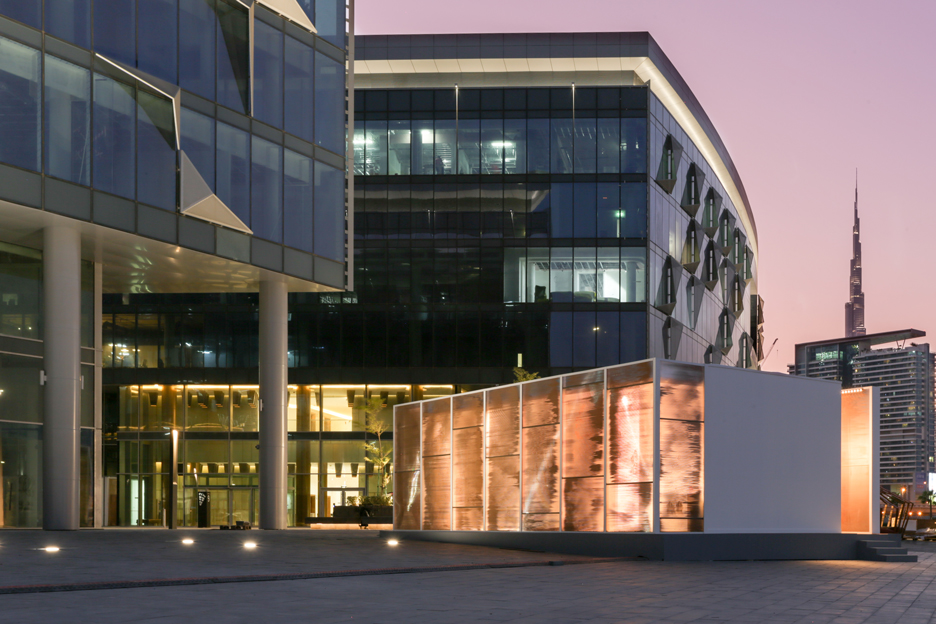
Cyril Zammit, director of design for Art Dubai – the organisation that has spearheaded the series of new design fairs and festivals in the city – has ambitious plans to make the design week bigger than its equivalent in London by the time Dubai hosts the 2020 Expo, less than five years away.
"Dubai Design Week is a response to an increasing presence and role of design in the city, as part of a wider cultural development," said Zammit.
This year's edition of Dubai Design Week featured installations by regional designers, a programme of six pavilions from Middle Eastern, North African and South Asian countries, as well as an exhibition of international graduate projects.
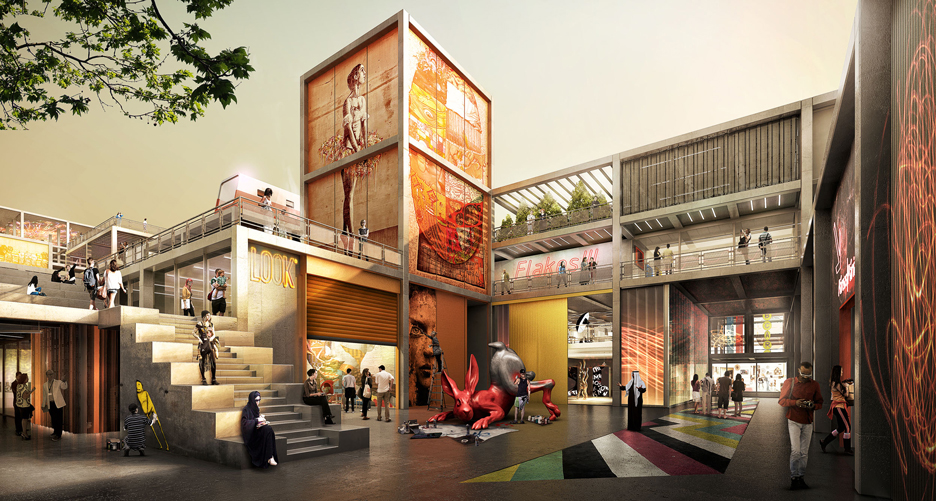
The fledgling event joins collectible design fair Design Days Dubai, started in 2012, and trade exhibition Downtown Design Dubai set up last year – all organised to cement the city as the region's premier design destination.
"It's starting to become successful," local designer Khalid Shafar told Dezeen during the event. "In the last three years, we have witnessed everything you see here today around design. Many designers have joined. I believe this is an infrastructure."
Located on the coast of the Persian Gulf, Dubai is strategically placed between Europe and Asia. The city began life as an ancient trading post and was a centre for pearl diving, then boomed after the discovery of oil in the 1960s. When reserves ran dry, it aimed to reposition itself as a global finance hub and tourist destination by building a spate of landmark architectural projects, but suffered significantly when the 2008 global financial crisis hit and many construction projects halted.
Now the United Arab Emirates is latching on to the fact that design could help diversify the country's post-crisis economy. During the design week, the recently established Dubai Design and Fashion Council published a 156-page report outlining the sector's contribution to the country.
The Middle East and North Africa (MENA) design report states that the region's design industry was worth $100 billion in 2014, and that the UAE is the largest contributor to this figure. It also says that the industry is growing at double the global rate, and that furniture is a bigger source of revenue than architecture.
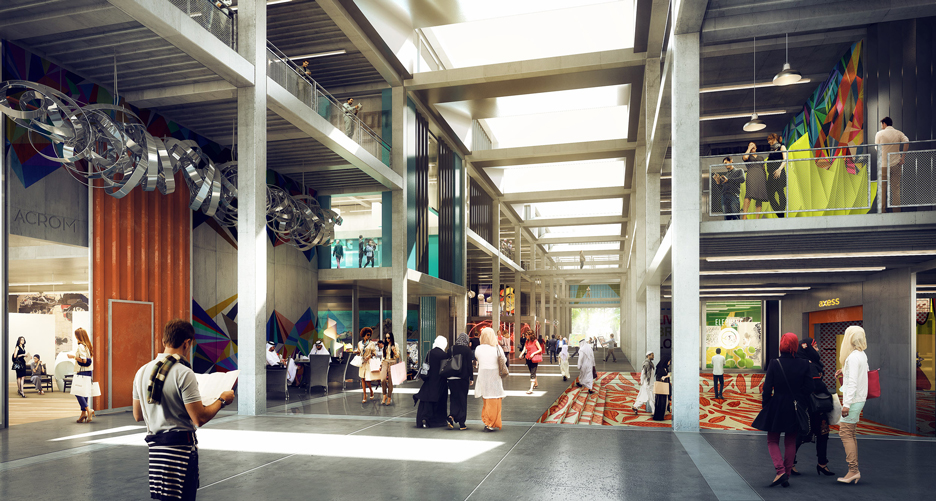
Since the city has bounced back to economic growth, Zammit believes it is the prime spot from which to catapult the Middle East's design industry.
"Dubai is the commercial capital for the region," he said. "It's a very strong point of convergence. We have regional and international headquarters here, we know that there's a huge potential for design."
Despite the economic figures, it is not all plain sailing for designers living and working in the region, who struggle with access to production facilities, working within a relatively small design scene, and negative attitudes towards gender.
"As a female designer from Saudi [Arabia], it's not easy at all in the country to be the face of something," said product and furniture designer Ayah Al Bitar, who is now based in Dubai. "Drive for support is growing but at a very slow rate."
"The community here is very small, and it overlaps with the art community," added glass designer Anjali Srinivasan, originally from India.
There is also a lack of design education and training, and many of the designers working in the city studied abroad before coming to Dubai. Al Bitar graduated from Parsons in New York, while Srinivasan got her degree from the USA's Rhode Island School of Design (RISD).
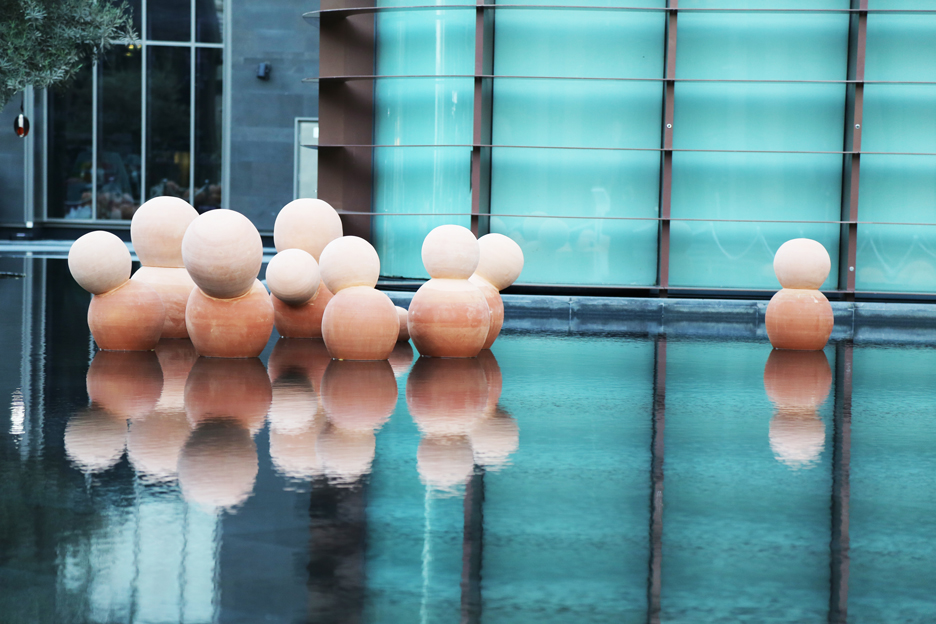
Shafar, who originally studied business at the American University of Dubai but has become a figurehead for UAE design after setting up his own studio, believes that the real issue is teaching the local population the value of design.
"Not everyone [here] understands what the role of a designer is," he told Dezeen. "We still don't have much knowledge of what design means and what designers do. That's why we're doing a lot of things like [Dubai Design Week]."
"It's not just for the designers, it's for the community to understand and so designers will not move on," Shafar continued. "If the community doesn't understand, the designers might move out and go somewhere where design is more appreciated."
One of the major initiatives aimed at helping both the existing design community and changing public perception is the construction of a dedicated design district, located on a patch of desert five minutes from Downtown Dubai. A designated tax-free zone, the Dubai Design District offers economic incentives for creative businesses.
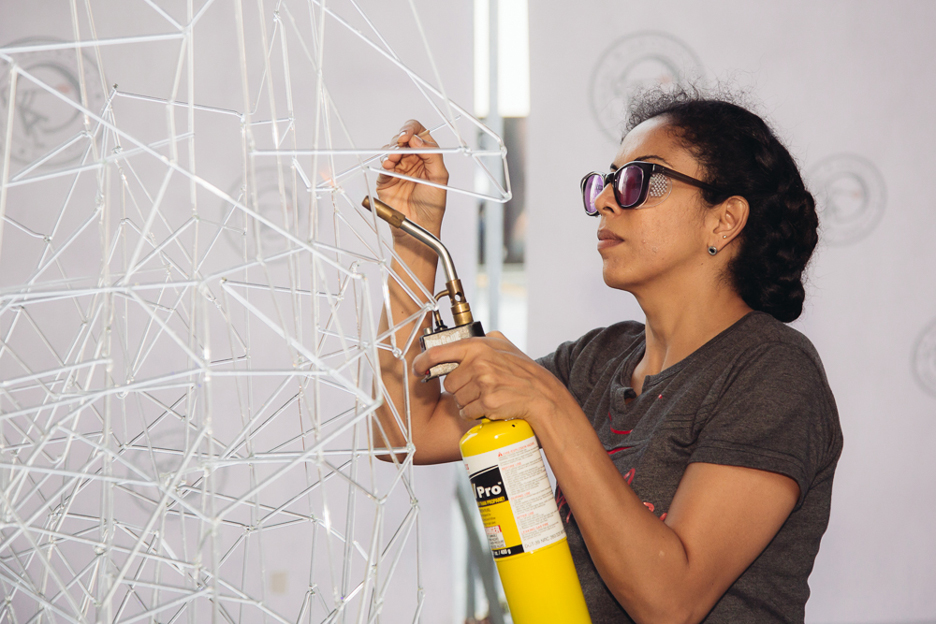
"It's a new wild west where if you're good enough, creative enough, you can set up something out of the blue," said Zammit. "We can do whatever we want here."
"You can come tomorrow, set up your business and make a start," he said.
The project was started in 2008 by investment company TECOM, but progress was delayed due to both the financial crisis and a lack of interest at the time.
"It wasn't something that we could artificially push, we had to see that there were green shoots from the community for design," said Lindsay Miller, managing director for Dubai Design District.
But by 2012, TECOM noticed that the city's industrial area had started to sprout galleries and workshops, while fashion and product designers like Shafar had started to gain reputations abroad.
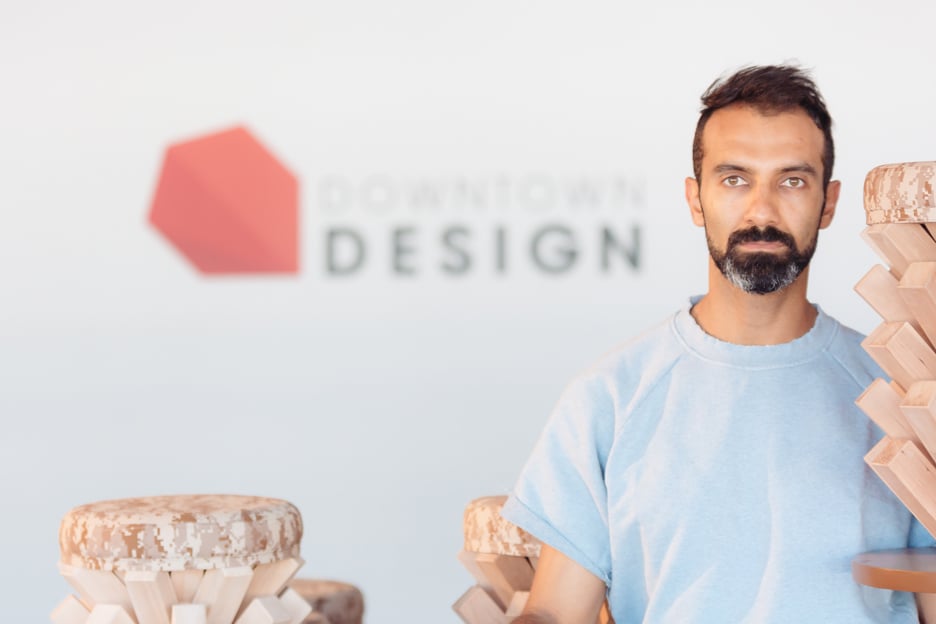
"We started to see that there was an appetite for people to come together and to try to push a regional design movement forward," Miller said.
The district, known as D3, opened its first phase earlier this year. Its buildings are already home to both local architecture and design studios, as well as a range of luxury international brands.
Modelled on creative communities like the Mission district of San Francisco and Shoreditch in London, the Foster + Partners-designed second phase of the project is due to complete in 2018. It is intended to accommodate workspace for 6,000 creatives across design, art and fashion, while the full masterplan also outlines the completion of 2,200 hotel rooms and 1,300 serviced apartments by the end of 2019.
The development is part of a wider "boom 2.0" that Dubai is currently experiencing, with large construction projects once again taking place across the city.
Srinivasan was one of the designers that noticed this shift, and thought she would benefit from moving to Dubai.
"I realised the city was at an interesting place and time in its history," she said. "It's organised enough to provide infrastructure and means but not rigid enough to not be able to create new ways of working or creating alternate systems, compared to say, New York."
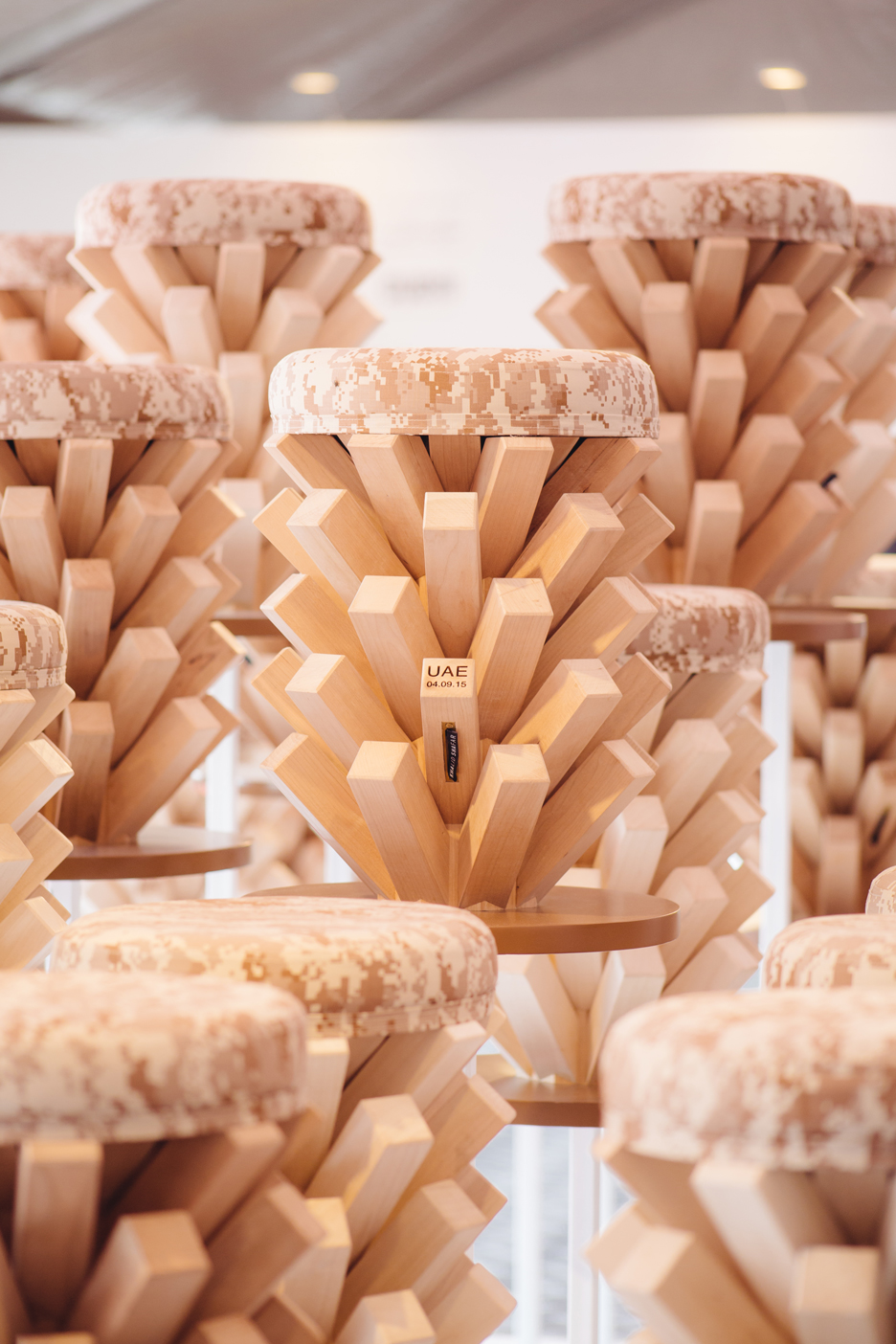
"Since the city is placed in a convenient location geographically between the two places of interest to my practice – India and the US – I figured I would live here for a bit and see what contributions I could make."
This year D3 hosted both the design week and Downtown Design Dubai, which exhibits furniture and lighting by both emerging and established designers and brands from around the world. The floor area for the event was doubled from 2014 to 2015 to accommodate demand from exhibitors.
The city has also hosted Design Days Dubai every March since 2012. The fair presents collectible furniture and objects represented by Middle East and international galleries.
All of these projects are supported and funded in part by the government, which is also investing in manufacturing to encourage designers to produce their work locally.
"Dubai has traditionally not been a manufacturing hub, it has always been a trade hub," said Srinivasan. "So after the last economic crash the Emir is trying to bring some manufacturing here. They are encouraging people like me to build small manufacturing industries, and try to train people to give them skills."
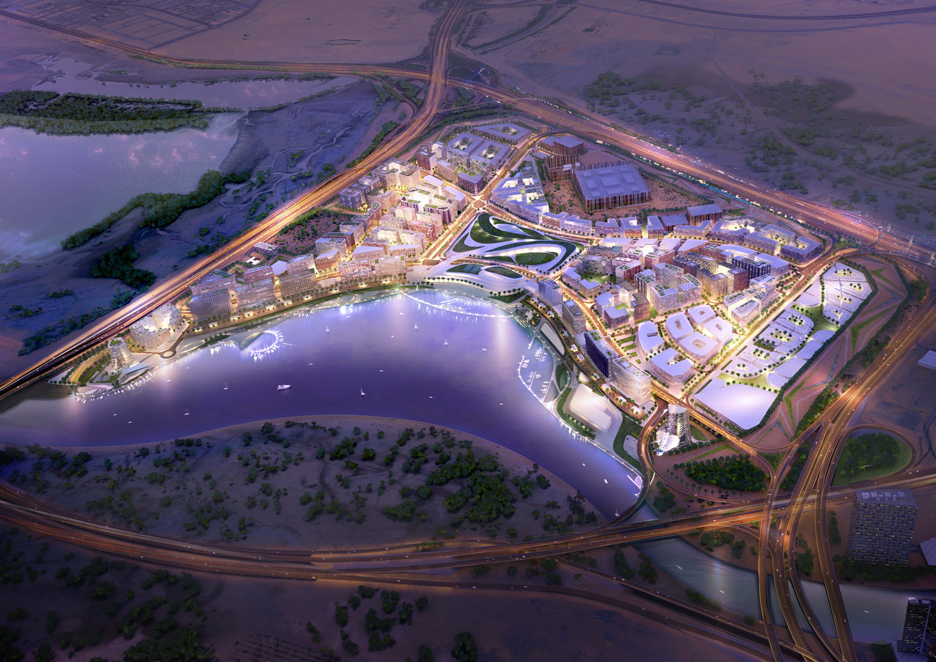
With the money in place, Shafar thinks that designers should make the most of the opportunities provided.
"The designers themselves are benefitting and are creating the right work at the right standards," he said. "If the government or private sector have done their part in putting out a platform, we need to use these platforms to create."
Despite optimism for the future of Dubai's design scene, its current members think the city still has a long way to go before it becomes a global design hub.
"It's exciting, but right now it's a very steep learning curve for everyone involved on the process end," said Srinivasan.
"It's growing," added Shafar. "I can't say we've reached there yet, it's going to be a long journey."